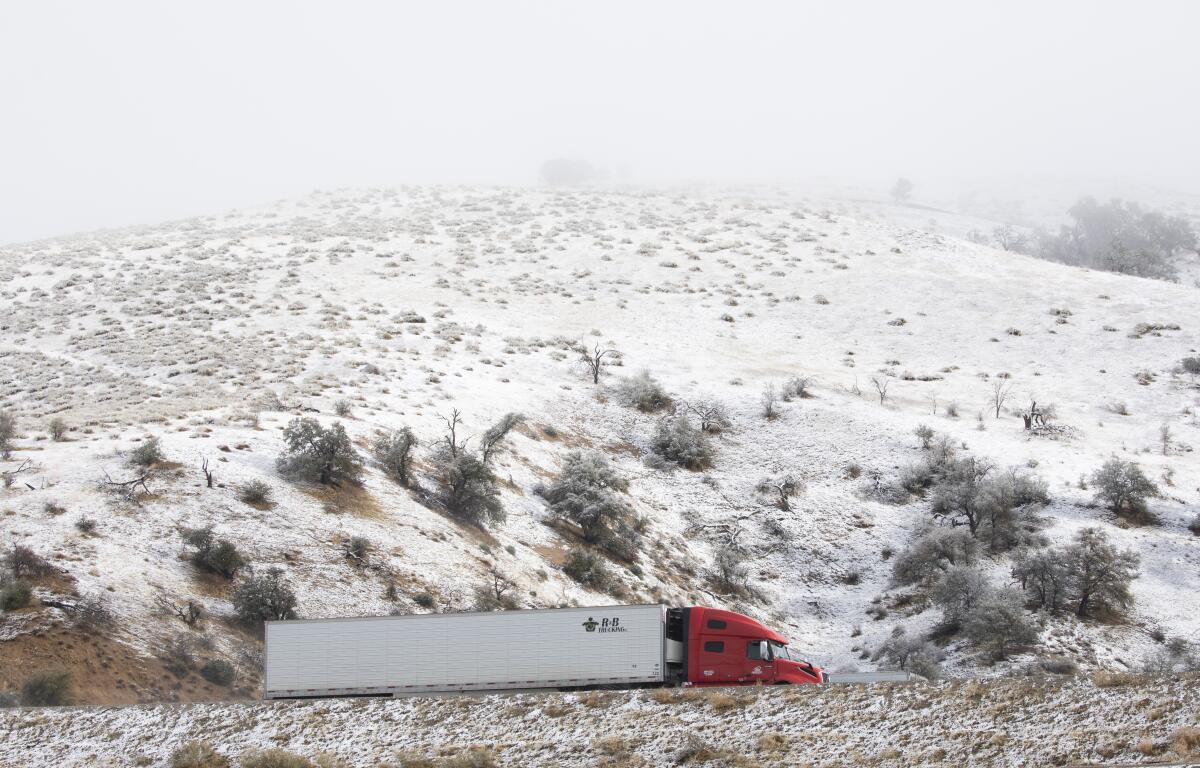Coldest storm of the winter to hit L.A mountains and beyond: ‘You need to be prepared’

- Share via
The coldest storm of the winter season is set to dump snow and ice to the mountains of Los Angeles County, according to an urgent advisory the National Weather Service issued Monday.
The region should expect 1 to 3 inches of snow, with up to 5 inches possible in the San Gabriel Mountains, starting at 6 a.m. Tuesday through noon Wednesday, the advisory warned. Affected mountain areas include those in San Luis Obispo County, Santa Barbara County, Ventura County and Los Angeles County, excluding the Santa Monica range.
“If you’re going to the mountains, you need to be prepared. People need to be very, very cautious,” said David Sweet, a meteorologist with the National Weather Service, Oxnard.
Snow, ice and winds as high as 40 mph will make for dangerous driving conditions along Interstate 5 from the Grapevine to Castaic, Highway 14 through the Soledad Canyon, and Highway 33 across the Ventura County mountains.
“Traffic will be affected and there could be closures depending on how much snow and ice accumulate on the roads,” Sweet added.
The winter storm, descending from the northeast into the Sierra but not greatly affecting California coastal regions, is already complicating travel over Sierra Nevada passes. According to the National Weather Service, chain controls are now in effect over the summit areas of the Sierra, including Interstate 80.
Officials caution drivers to travel with extra food, warm clothing, and chains for their tires. The National Weather Service expects the cold weather will extend into the Antelope Valley and Cuyama Valley as the storm draws closer.
The chilly temperatures follow a month and half of near-zero precipitation in the region and much of the state, along with some record-setting temperatures. On Feb. 12, UCLA recorded a high of 89 degrees, one degree higher than the previous record from 1971 for that day. Los Angeles International Airport also reached a record 89 that day.
More to Read
Sign up for Essential California
The most important California stories and recommendations in your inbox every morning.
You may occasionally receive promotional content from the Los Angeles Times.











